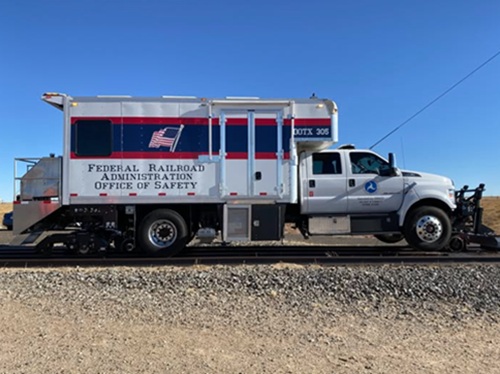The Federal Communications Commission adopted new rules for the 5.9 gigahertz (GHz) wireless communications spectrum on November 18, opening up the lower 45 megahertz portion of the band to unlicensed uses, such as WiFi, while reducing spectrum available for transportation safety needs to the upper 30 megahertz portion of the band.
[Above graphic via the USDOT.]
The FCC noted in a statement that it also adopted technical standards as part of its ruling to enable full-power indoor unlicensed operations in the lower 45-megahertz portion of the band immediately, as well as outdoor unlicensed use on a coordinated basis under certain circumstances.

Under the new rules, intelligent transportation system services will be required to vacate the lower 45 megahertz of the band within one year.
Transportation industry organizations roundly panned the agency’s 5.9 GHz reallocation plan – in the works for more than a year – due to its impact on vehicle safety efforts.
“The leaders of all 50 state departments of transportation, the District of Columbia, and Puerto Rico are unanimous in their support for preserving the 5.9 GHz wireless spectrum for transportation-only usage,” noted Jim Tymon, executive director of the American Association of State Highway and Transportation Officials, in a statement.

“Without the full 5.9 GHz spectrum available to use for connected vehicle technologies it will be significantly more difficult to eliminate the kinds of vehicle crashes that contribute to more than 37,000 fatalities on America’s roadways each year, as well as the safe deployment of connected and automated vehicles,” he explained.
Tymon made the same points in several missives for more than a year to the FCC, Congress, and even the White House.
“The 5.9 GHz band has been part of the spectrum that has been reserved for use for life-saving transportation technologies,” he emphasized. “At a time when we are trying to get to zero traffic fatalities, the FCC should stay the course and not give up the spectrum that the transportation community has been counting on – and has already made considerable investments in – to help save lives.”

Shailen Bhatt, president and CEO of the Intelligent Transportation Society of America, said in a separate statement that the FCC “abandoned public safety” by “voting to give away” a majority of the 5.9 GHz spectrum that currently allows life-saving vehicle communication technologies to work without interference.
“ITS America is but one of dozens of transportation safety organizations that have been sounding the alarm about the implications of this action – from the U.S. Department of Transportation, to all state departments of transportation and so many other organizations dedicated to keeping people safe on U.S. roads,” he said.
“In a time in which we are rightly focused on following science and data, it is inexplicable that the FCC is willfully disregarding the advice of experts,” Bhatt added, with the agency’s reallocation action to “likely render the entire band useless for safety.”
One reason for Bhatt’s concern is that the FCC said in its order that its 5.9 GHz reallocation plan “begins the transition away” from dedicated short-range communications or DSRC services to cellular vehicle-to-everything or C-V2X technology.

Meanwhile, the leadership of the House of Representatives Committee on Transportation and Infrastructure has asked the Government Accountability Office to study the safety implications of the FCC’s 5.9 GHz reallocation plan.
In a letter sent to GAO Comptroller General Gene Dodaro on October 30, House T&I Committee Chairman Peter DeFazio, D-Ore., and Ranking Member Sam Graves, R-Mo., said that the FCC’s plan “may significantly affect the efficacy of current and future applications of vehicle safety technologies.”
“Advanced transportation technologies have the potential to revolutionize our transportation system, but the safety and effectiveness of those technologies will depend on the amount of spectrum available on the safety band,” they said.
 Top Stories
Top Stories
State DOTs Making Preparations for Wintertime Operations
December 12, 2025 Top Stories
Top Stories

